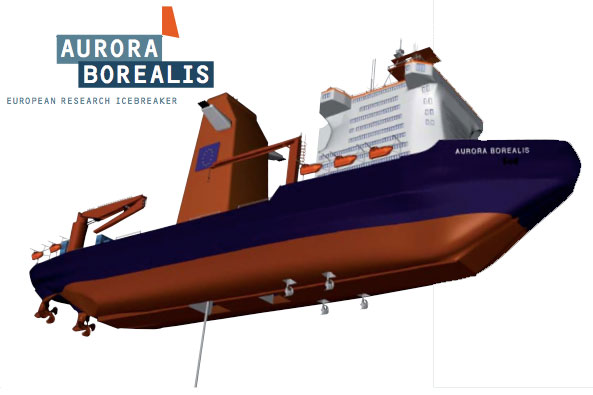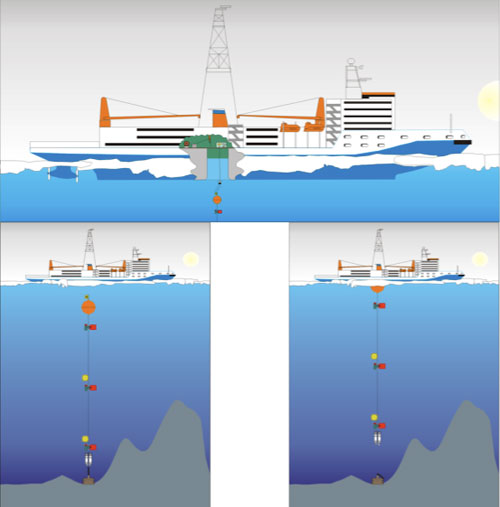Knock Nevis – The World’s Largest Supertanker
In the annals of maritime history, few names evoke as much awe and fascination as the Knock Nevis. Known by many names throughout her storied life—Seawise Giant, Happy Giant, Jahre...

The most technologically advanced drillship in the world is not on lovaton in the gulf of mexico or in a Korean shipyard. Actually it’s not even built yet. Meet the Aurora Borealis, a dynamically positioned, drillship/icebreaker, arctic research vessel designed for the European Union. The official website tells us;
The Research Icebreaker AURORA BOREALIS will be the most advanced Polar Research Vessel in the world with a multi-functional role of drilling in deep ocean basins and supporting climate/environmental research for the next 40 years.
The new technological features will include azimuth propulsion systems, satellite navigation, ice-management support, deep-sea drilling under a closed sea-ice cover and the deployment and operation of Remotely Operated Vehicles (ROV) and Autonomous Underwater Vehicles (AUV) from one of the two moon-pools.
The unique feature of the vessel is the drilling rig, which will enable sampling of the ocean floor down to 5000 m water depth and with 1000 m penetration into the seafloor at the most inhospitable places on earth. The drilling capability will be deployed in both polar regions and AURORA BOREALIS will be the only vessel worldwide to undertake this type of scientific investigation.
• Powerful icebreaker with ca. 55 MW (diesel-electric)
• Highest classification for icebreakers
• Twin hull
• Two moon pools 7 x 7 m each
• Dynamic Positioning System
• Deep-sea drilling under a closed sea-ice cover
• Drilling rig: max. 5,000 m water depth and 1,000 m core
• Riserless drilling technology
• Modularized mobile laboratory systems – mission specific laboratories
Length over all ca. 180 m | Beam ca. 40 m | Personnel (crew + scientists) 120 | Expedition duration 60 days.

For more information on the Aurora Borealis visit the official website HERE or download the presentation HERE. For the oceanography geeks a more detailed study can be found HERE.
UPDATE: The BBC has just run an excellent article on this vessel which can be found HERE.
Note: This article was originally posted in Jan 08

Sign up for gCaptain’s newsletter and never miss an update

Subscribe to gCaptain Daily and stay informed with the latest global maritime and offshore news
Essential news coupled with the finest maritime content sourced from across the globe.
Sign Up